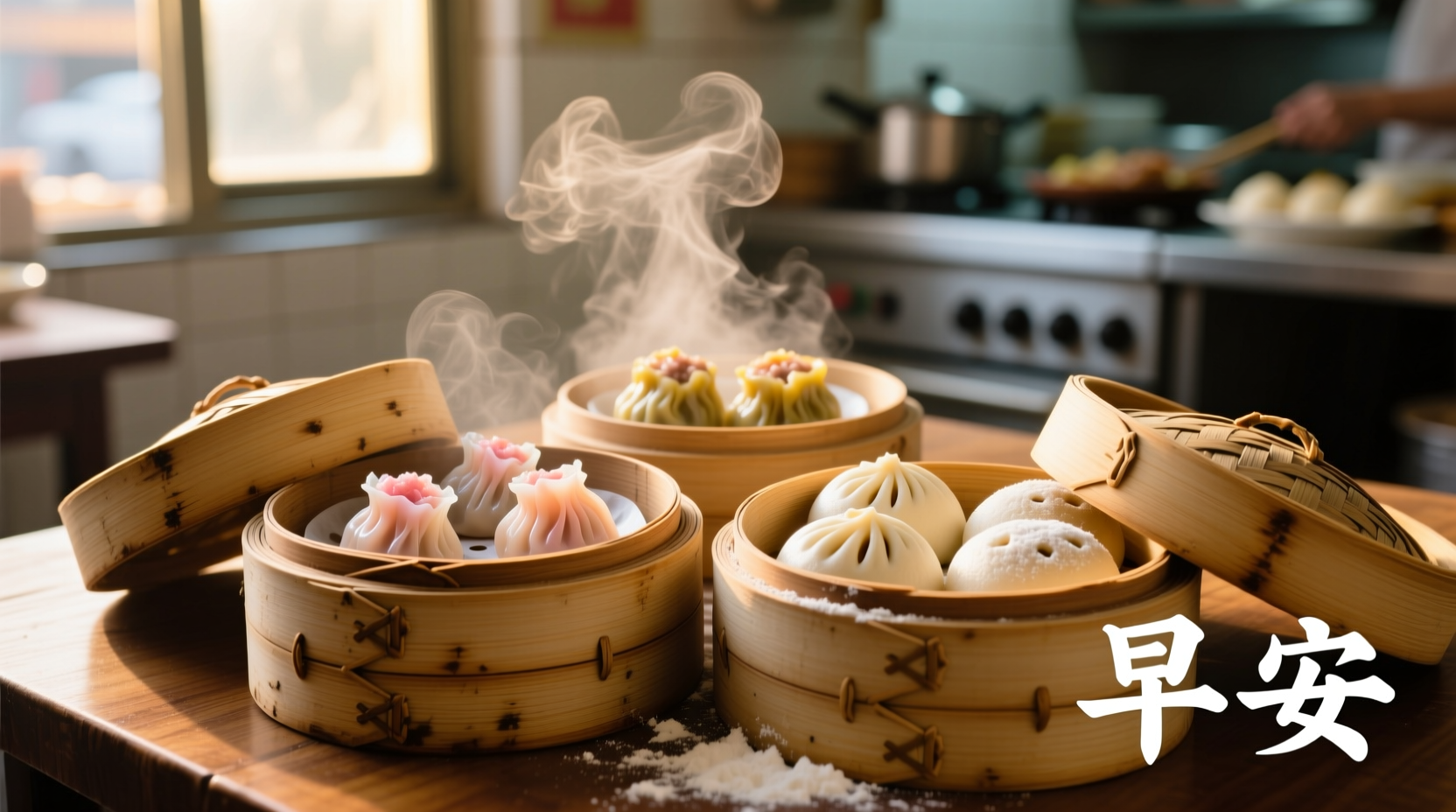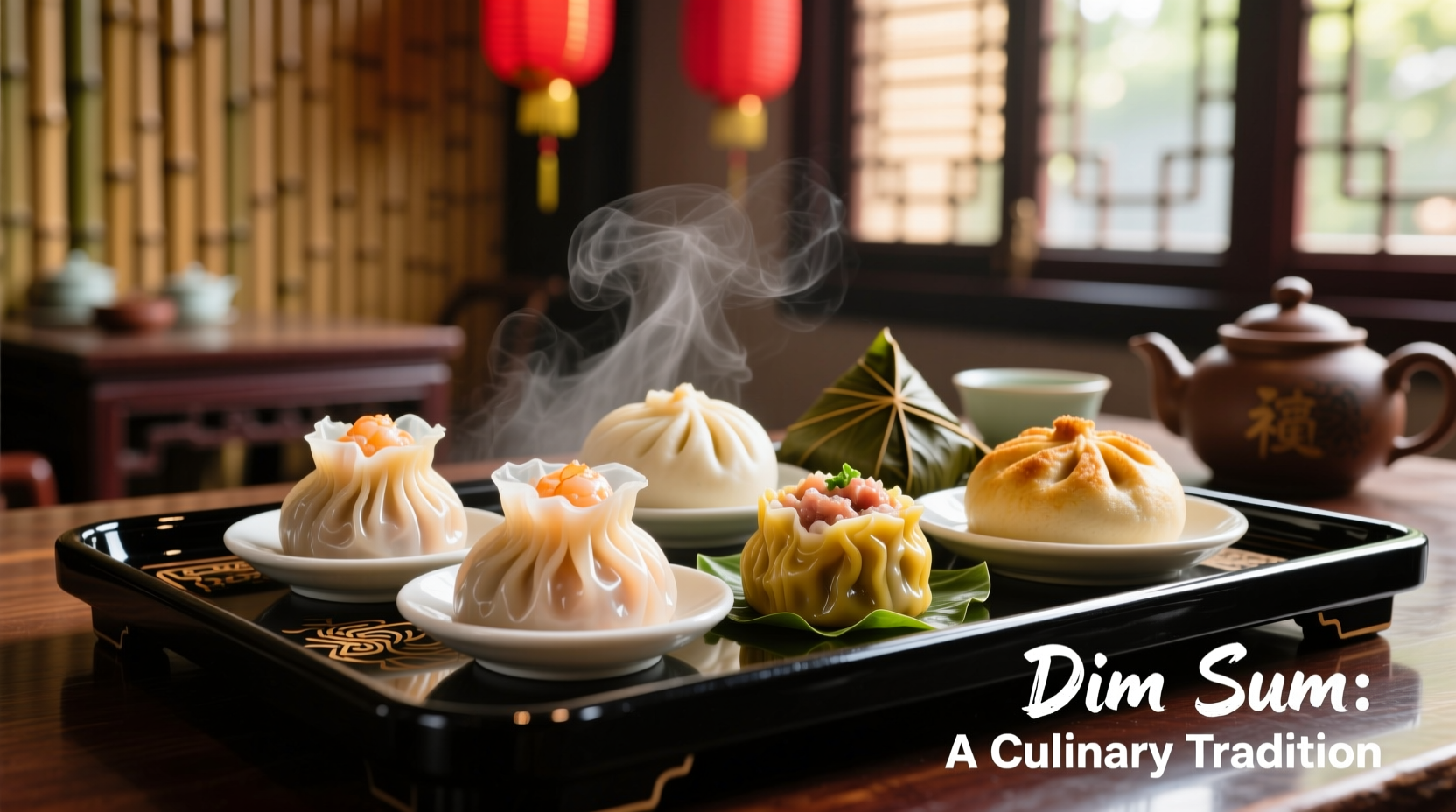Your Complete Guide to Understanding Dim Sum
If you've ever wondered what is dim sum food and why it captivates food lovers worldwide, you're about to discover the rich culinary tradition behind this beloved Chinese dining experience. More than just 'Chinese snacks,' dim sum represents centuries of culinary artistry, social tradition, and regional diversity that transforms ordinary meals into extraordinary cultural experiences.
The Essence of Dim Sum: Beyond the Basics
Dim sum (点心 in Chinese, literally 'touch the heart') refers to the wide array of small-portion Chinese dishes traditionally served in bamboo steamers or on small plates. Unlike Western appetizers, dim sum constitutes a complete dining experience where multiple dishes are shared among the table. The tradition emerged along ancient tea routes in southern China, where travelers needed substantial refreshments during long journeys.
Historical Evolution: From Ancient Practice to Global Phenomenon
Understanding what dim sum food actually is requires exploring its fascinating timeline:
- 3rd Century BCE: Early tea houses along Silk Road routes begin serving simple snacks with tea
- Tang Dynasty (618-907 CE): Tea culture formalizes with complementary food offerings
- Song Dynasty (960-1279 CE): First documented 'yum cha' (tea drinking) establishments appear
- 19th Century: Dim sum tradition flourishes in Guangdong province teahouses
- Early 20th Century: Dim sum spreads to Chinatowns worldwide through Chinese immigration
- 1980s-Present: Global popularity surge with modern interpretations while preserving traditional techniques
What Makes Dim Sum Unique: Key Characteristics
When exploring what dim sum food consists of, several distinctive features set it apart from other Chinese cuisines:
| Feature | Traditional Practice | Modern Adaptation |
|---|---|---|
| Portion Size | Bite-sized for sharing | Maintained, though some restaurants offer larger portions |
| Service Style | Pushed on carts through dining room | Carts or checklists; some high-end establishments use digital ordering |
| Tea Pairing | Essential component (Jasmine, Pu-erh) | Still emphasized, with expanded tea selections |
| Preparation | Handcrafted on premises | Mix of handmade and pre-prepared items in busy restaurants |

Core Components: What's Actually in Dim Sum?
When people ask what is dim sum food made of, they're often surprised by the incredible variety. Authentic dim sum encompasses several major categories:
Dumplings (Most Iconic Category)
- Har gow (shrimp dumplings) - translucent wrappers with whole shrimp
- Siu mai (pork dumplings) - open-topped with mushroom and shrimp
- Char siu bao - steamed buns filled with barbecued pork
Rolls and Others
- Cheong fun - rice noodle rolls with various fillings
- Phoenix claws - steamed chicken feet in black bean sauce
- Lo mai gai - glutinous rice with chicken in lotus leaf
Cultural Context: When and How Dim Sum Is Traditionally Served
Understanding what dim sum food represents culturally is as important as knowing its ingredients. In traditional Cantonese culture:
- Dim sum is primarily a brunch experience, typically served from early morning until mid-afternoon
- The practice of yum cha (drinking tea) is inseparable from dim sum dining
- It serves as a social institution where families and friends gather for conversation
- Tea isn't just a beverage—it's used to cleanse the palate between dishes and even as a subtle communication tool (tapping fingers expresses thanks)
According to the Chinese Culinary Institute's documentation of traditional food practices, dim sum's social function remains vital even as it gains global popularity. The institute's 2023 study on Chinese food traditions notes that "dim sum represents one of China's most enduring culinary social traditions, maintaining its communal essence despite commercialization pressures" (Chinese Culinary Institute, 2023).
Practical Guide: How to Experience Dim Sum Like a Local
Now that you understand what dim sum food truly is, here's how to navigate a traditional dim sum meal:
Before You Go
- Go hungry—dim sum is meant to be sampled in quantity
- Visit during traditional hours (7am-2pm) for the freshest selections
- Bring friends—sharing is essential to the experience
At the Restaurant
- Tea is served first—accept it as it cleanses the palate
- When carts come by, point to items you want (or check off on a list)
- Don't be shy about asking servers about unfamiliar dishes
- Leave room for multiple rounds—dishes come continuously
Common Misconceptions About Dim Sum
Many people searching for what is dim sum food encounter confusion between related concepts:
| Misconception | Reality | Why It Matters |
|---|---|---|
| Dim sum = all Chinese food | Dim sum is specifically Cantonese small-plate tradition | Helps appreciate regional Chinese culinary diversity |
| Dim sum is just for brunch | Traditional yum cha is brunch, but many restaurants serve dim sum all day | Understanding cultural roots vs. modern adaptations |
| All dim sum is steamed | Includes steamed, fried, baked, and boiled varieties | Appreciating the full culinary range of dim sum |
Regional Variations: Dim Sum Around the World
While authentic dim sum originates from Guangdong province, regional adaptations have emerged globally. In Hong Kong, dim sum maintains strong traditional elements with emphasis on handmade craftsmanship. In North America, fusion elements sometimes appear while preserving core techniques. The key distinction lies in ingredient quality and preparation authenticity—traditional dim sum features freshly made doughs and fillings prepared daily, whereas lower-quality establishments may use pre-made components.
Food historians note that the globalization of dim sum has created interesting hybrid traditions while preserving core elements. As documented by the International Association of Culinary Professionals, "the spread of dim sum represents one of the most successful culinary cultural transfers of the 20th century, maintaining authenticity while adapting to local tastes" (IACP, 2024).
Conclusion: The Enduring Appeal of Dim Sum
Understanding what dim sum food really is reveals much more than just a collection of small dishes—it represents a culinary philosophy emphasizing variety, craftsmanship, and social connection. Whether you're a first-time diner or a regular enthusiast, appreciating dim sum's history, cultural significance, and proper dining etiquette enhances the experience far beyond mere sustenance. The next time you sit down for yum cha, you'll recognize each steaming basket as a continuation of centuries-old tradition that transforms ordinary meals into extraordinary cultural experiences.











 浙公网安备
33010002000092号
浙公网安备
33010002000092号 浙B2-20120091-4
浙B2-20120091-4